The UK, when compared to the rest of the world is a small country. It covers over 80,000 square miles (209,000 square kilometers). However, it is pretty well set up for internal flights across the country. There are probably more airports operating internal flights in the UK than you may think.
So, what are your options for internal flights in the UK? Here’s an overview of the most popular destinations used by passengers in the UK:
| Airport | Popular UK Destinations | Flight Time |
| London Heathrow (LHR) | Birmingham Manchester Edinburgh Newquay (Cornwall) Belfast | 1 hr 1 hr 5 mins 1 hr 25 mins 1 hr 15 mins 1 hr 20 mins |
| Birmingham (BHX) | Edinburgh Newquay (Cornwall) | 1 hr 15 mins 1 hr |
| Manchester (MAN) | London Edinburgh Newquay (Cornwall) Belfast | 1 hr 5 mins 1 hr 10 mins 1 hr 15 mins 1 hr |
| Edinburgh (EDI) | London Birmingham Belfast | 1 hr 15 mins 1 hr 15 mins 50 minutes |
The great thing about the internal flights in the UK and even to Ireland is that the journey time is very short, averaging around an hour wherever you need to get to. Not only that, in general, the overall time from check in to boarding the flight tends to be shorter. Let’s look into this further.

What is a Domestic Flight?
A domestic flight can be defined as a commercial flight where you depart and arrive in the same country.
Those airports that only operate domestic flights can be called domestic airports.
Check-In Times for UK Flights
How early should you arrive?
Arriving early to any airport is always a must, just to account for those unexpected delays. But, for internal flights, you don’t need to get there as early as you would for international flights. It’s recommended you should arrive at the airport at least 1 and a half hours before your scheduled flight to allow sufficient time to check-in and go through security.
Having said that, if you’re only carrying hand luggage, there won’t be a need for you to check-in luggage and in that case, we’d recommend getting to the airport about an hour and 15 mins before your flight.
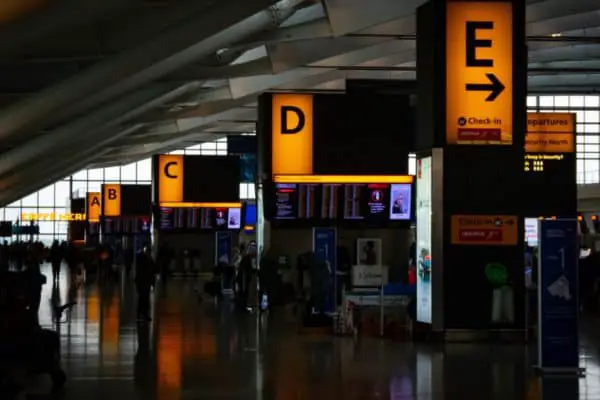
Domestic Flight IDs
Do you need your passport?
The best thing to do here is to check with your with your airline. In general, photographic ID is required on domestic flights. This can include the following:
- A valid passport
- An expired passport – can be used up to 5 years after expiry (number of expired years depends on the airline)
- Valid photographic EU or Swiss national identity card
- Valid photographic driving license (provisional or full)
- Valid armed forces identity card
- Valid police warrant card/badge
- Citizen Card
Different airlines will have slightly different requirements of what ID they’ll accept. The easiest thing to do is just carry your passport if you have one as you definitely won’t be turned away with that.
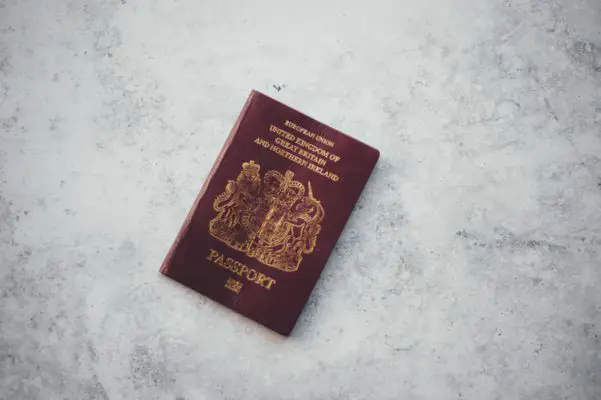
Which passengers need to show ID?
Passengers who are over 16 years old will be required to show photographic ID.
If the passenger is under 16 years old but traveling with an adult, they will not be required to show photographic ID. The adult can vouch for their identity. However, if the passenger is traveling alone and they are under 16 years old, they will be required to show photographic ID.
Hand Luggage – The Rules
If you decide to only carry hand luggage, there are certain rules to follow for the UK of what you can and can’t pack in hand luggage.
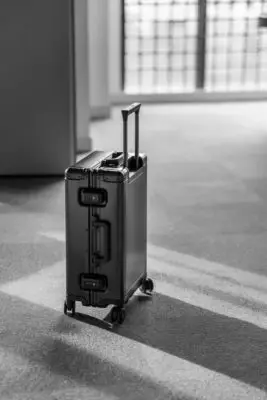
Liquids
One of the main points to consider is the volume of liquid you can take. Take a look below of what is considered acceptable.
- containers must hold no more than 100ml
- containers must be in a single, transparent, resealable plastic bag, which holds no more than a liter and measures approximately 20cm x 20cm
- contents must fit comfortably inside the bag so it can be sealed
- the bag must not be knotted or tied at the top
- you’re limited to 1 plastic bag per person
- you must show the bag at the airport security point
In some circumstances, you can take more than 100ml in hand luggage if they are essential for medical or dietary purposes. Also, if you’re traveling with a baby and you require baby food, it is acceptable to take more than 100ml. However, this is always worth checking with your airline their specific requirements.
Source: Hand luggage restrictions at UK airports
Other Items
- 1 lighter allowed on yourself (not your hand luggage)
- Musical instruments – check with your airline
- Pushchairs, wheelchairs and walking aids are usually allowed but need to go through security first
- Corkscrew, knife, large scissors are not allowed in hand luggage
- Most electrical devices allowed in hand luggage e.g. mobile phone, laptop, tablet, hair straighteners, iron, electric shaver, and cameras
- Sports equipment that is forbidden in hand luggage includes heavy bats, golf clubs, darts, walking poles, firearms, martial arts equipment
- In general, work tools are not allowed in hand luggage
- Chemicals, toxins, and ammunition are obviously forbidden
For a full detailed breakdown of what items are allowed and forbidden items, check out the gov.uk website for the most up to date information.
Why Fly?
It’s quicker!
Well, the obvious answer is the shorter journey time. But how does it really compare to driving or taking the train? Here’s a breakdown of the most common journeys in comparison to driving or taking public transport with their approximate journey times.
| Journey | Flight Time | Driving Time | Train Time |
| London to Edinburgh | 1 hr 25 mins | 7 hrs | 5 hrs |
| London to Glasgow | 1 hr 15 mins | 7 hrs | 5 hrs |
| London to Manchester | 1 hr 5 mins | 4 hrs | 2 hrs |
| London to Belfast | 1 hr 20 mins | 10 hrs (including a ferry) | 15 hrs (including a ferry) |
| Liverpool to Belfast | 35 mins | 7 hrs (including a ferry) | 10 hrs (including a ferry) |
Cost-Effective
With many budget airlines available, you can get some great deals on internal flights in the UK and even Ireland. I’ve seen flights as cheap as £5 one way! If you’re traveling alone, it can also probably more cost-effective.
Take a look at our summary below of what budget airlines are available at which airport. Click on the links to find out more about which internal flights they cover.
| Airline | Airport |
| Ryanair | Aberdeen, Belfast International, Birmingham, Bournemouth, Bristol, Cardiff, Derry, East Midlands, Edinburgh, Glasgow, Leeds Bradford, Liverpool, London Gatwick, London Luton, London Stansted, Manchester, Newcastle, Cornwall Airport Newquay |
| Easyjet | Aberdeen, Belfast International, Birmingham, Bristol, Bournemouth, Cardiff, Edinburgh, Glasgow, Inverness, Liverpool, London Stansted, London Gatwick, London Luton, London Southend, Manchester, Newcastle Southampton |
| Jet2 | Belfast, Birmingham, East Midlands, Edinburgh, Glasgow, Leeds Bradford, London Stansted, Manchester, Newcastle |
| FlyBe | Aberdeen, Belfast City, Bristol, Cardiff, Dublin, East Midlands, Edinburgh, Glasgow International, Inverness, Ireland West (Knock), Liverpool, London Gatwick, London Heathrow, Humberside, Newcastle, Birmingham, Cork, Exeter, Leeds Bradford, London City, London Southend, Wick John O’Groats, Manchester, Newquay, Southampton, Teesside International |
Stress-Free?
Okay, so flying compared to driving or taking public transport has its benefits and disadvantages. Overall, we think it can be less hassle. The journey will probably be more comfortable and you won’t be as tired when you get to your destination.
Of course, there can always be the chance of delays with flights, but you’re just as likely to get this on the roads and with trains. So, we definitely think that taking an internal flight is a great option.
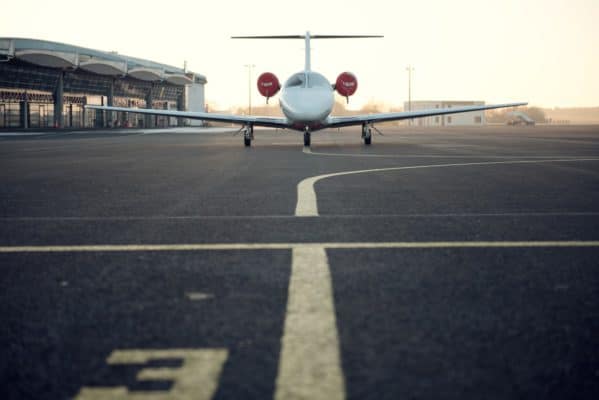
Best Internal Flights
So what do we think about the best internal flights worthy of taking? Here are our top three picks:
London to/from Edinburgh
Flight cost to Scotland tends to be more expensive compared to Northern Ireland, however, still inexpensive. Prices can vary when you book but return starting from under £40 so this flight is definitely worth taking. Compared to driving, you’ll definitely be saving money on fuel cost enough for 7 hours of driving, not to mention the tiredness!
If you decide to take the train, you’re looking at around 5-6 hours journey and paying a lot more for the tickets easily over £100 for a return ticket. It’s a no brainer!
You also have every choice with whichever London airport you want to take. All six London airports offer flights to Edinburgh so this should definitely cut down the time traveling to the airport if you can just go to your nearest one.
London is obviously well-connected, so which airport you fly into it’ll be easy to make your onward travel arrangements. Edinburgh also boasts great transport links. In terms of public transport, there are trams, trains, buses, and coaches available connecting you to the city and surrounding areas.

London to/from Manchester
While this is a shorter flight compared to Edinburgh and nearly half the amount of time to drive, we think this is definitely another flight worth taking if you’re connecting over to another flight out of the country. It just makes the whole travel experience a lot less hassle. The last thing you want to be doing after a long flight is driving or changing to take a train or coach back up to Manchester from London.
Price-wise, as well, similar to Edinburgh, trains can be pretty expensive. A return trip can easily cost more than £100. However, the train journey is not too bad taking around 2 and a half hours. The thing to weigh up here is the cost of travel with travel time.
You may have a shorter overall travel time with the train as you won’t have to faff about getting early to the airport and going through security, but it’s likely you’ll end up paying more for your ticket.
Manchester is also a well-connected city with trams, trains, coaches, and buses. You can get to wherever you need to go!

London to/from Belfast
This flight is 100% worth taking. Firstly, the deals you can get with budget airlines is awesome. We’ve seen tickets for £5 one way! And of course, as this journey involves a ferry crossing if you drive or take the train, it’s definitely less hassle to fly.
As we’ve mentioned before, this journey can take around 10 hours if you want to drive or take the train. It’s just not worth it. Flying will only take just over an hour. Even counting the additional time to get to the airport, check-in and go through security, this journey would likely be a lot shorter.

Which other airports in the UK & Ireland provide internal flights?
If you want to know more about any given UK or Ireland airport and what internal flights they provide, check out the summary below. This is only including flights on the mainland and not the surrounding islands around the UK and Ireland.
| Region | Airport | Destination |
| England | East Midlands Airport (EMA) | Aberdeen Belfast Dublin Edinburgh Glasgow Inverness Knock Shannon |
| England | London Luton Aiport (LTN) | Dublin Cork Knock Kerry Edinburgh Glasgow Aberdeen Inverness Belfast |
| England | Norwich Airport (NWI) | Aberdeen Edinburgh |
| England | London Southend Aiport (SEN) | Newcastle Edinburgh Carlisle Belfast Aberdeen Derry Dublin Glasgow London Newquay |
| England | London Stansted Airport (STN) | Belfast Cork Dublin Edinburgh Glasgow Kerry Knock Shannon |
| England | London Heathrow Aiport (LHR) | Newquay Manchester Leeds Newcastle Edinburgh Glasgow Belfast Shannon Cork Dublin |
| England | London City Airport (LCY) | Belfast Dublin Edinburgh Exeter Glasgow London Manchester |
| England | Teeside International Airport (MME) | Aberdeen Belfast Cardiff Dublin London Southampton |
| England | Newcastle International Airport (NCL) | Aberdeen Belfast Bristol Exeter London Newquay Southampton |
| England | Liverpool John Lennon Airport (LPL) | Belfast Cork Derry Dublin Knock Newquay |
| England | Manchester Airport (MAN) | London Edinburgh Newquay Belfast |
| England | London Gatwick Airport (LGW) | Newquay Edinburgh Glasgow Inverness Belfast Knock Shannon Cork |
| England | Southampton Airport (SOU) | Manchester Leeds Glasgow Newcastle Dublin Edinburgh Belfast Teeside |
| England | Exeter Airport (EXT) | Belfast Dublin Edinburgh Glasgow London Manchester Newcastle |
| England | Bournemouth Airport (BOH) | Dublin |
| England | Carlisle Lake District Airport | Belfast Dublin London |
| England | Cornwall Airport Newquay | London Aberdeen Glasgow Newcastle Cork Dublin London Manchester Leeds Birmingham Belfast Edinburgh |
| England | Bristol Airport (BRS) | Belfast Newcastle Knock Dublin Aberdeen Edinburgh Glasgow Inverness |
| England | Birmingham Aiport (BHX) | Aberdeen Belfast Cork Dublin Edinburgh Glasgow Inverness Newquay Shannon |
| England | Humberside Airport | Aberdeen |
| England | Leeds Bradford International Airport (LBA) | Belfast Dublin London Newquay Southampton |
| Wales | Cardiff Airport (CWL) | Teeside Newcastle Edinburgh Glasgow Belfast Dublin Cork |
| Scotland | Aberdeen International Airport (ABZ) | Belfast Birmingham Bristol Cardiff Dublin Teeside Humberside Leeds London Manchester Newcastle Newquay Norwich |
| Scotland | Campbeltown Airport (CAL) | Glasgow |
| Scotland | Inverness Airport (INV) | Belfast Birmingham Bristol Dublin London Manchester |
| Scotland | Dundee Airport (DND) | London |
| Scotland | Edinburgh Airport (EDI) | Belfast Birmingham Bristol Cardiff Cork Derry Dublin East Midlands Exeter Knock London Manchester Newquay Norwich Shannon Southampton |
| Scotland | Glasgow International Airport (GLA) | Newquay Exeter Cardiff Bristol Southampton London Birmingham East Midlands Belfast Dublin Cork Donegal Derry Campbeltown |
| Scotland | Wick John O’Groat’s Airport (WIC) | Aberdeen Edinburgh |
| Northern Ireland | Belfast International Airport (BFS) | Birmingham Bristol Edinburgh Glasgow Liverpool London Manchester Newcastle |
| Northern Ireland | George Best Belfast City Airport (BHD) | Glasgow Inverness Aberdeen Dundee Carlisle Teeside Leeds Manchester Birmingham East Midlands London Southampton Cardiff Exeter Newquay |
| Northern Ireland | City of Derry Airport (LDY) | London Manchester Glasgow Edinburgh Liverpool |
| Ireland | Dublin Airport | Bouremouth Carlisle London |
| Ireland | Cork Airport | Birmingham Bristol Cardiff Edinburgh Glasgow Liverpool London Manchester Newquay |
| Ireland | Shannon Airport | Birmingham Edinburgh London Manchester |
| Ireland | Ireland West Airport (Knock) | Birmingham Bristol East Midlands Edinburgh Liverpool London Manchester |
| Ireland | Kerry Airport | Manchester London Dublin |
| Ireland | Donegal Airport | Dublin Glasgow |
Other Airports on the Islands of the UK
So the above table only shows those airports located on the mainland of the UK. However, there are numerous small airports located on the many islands of the coast of the UK as well. Most of these are of the coast of Scotland and also other islands such as Jersey, Guernsey and Isle of Man of the coast of England. For a full list of UK airports including the islands, check out the Wikipedia page.
It’s worth noting though, if you’re planning on visiting these islands, ensure you plan in advance as scheduled flights tend to be few and far between. This, of course, is dependent on the airport, but definitely worth checking out well in advance.
Top Things to Take Away – The Important Bits
- You can arrive at the airport around 1 hour and 30 mins before your scheduled flight for domestic flights.
- Check with your airline what counts as valid ID before traveling.
- Ensure you don’t carry more than 100ml of liquid per container in your hand luggage. If you plan to carry more for medical, dietary needs or because if you need to carry baby food, check with your airline in advance to see what’s acceptable.
- If you’re unsure whether certain items are allowed in hand luggage or checked-in luggage, check the UK gov.uk website prior to packing.
- There are many beautiful islands off the coast of mainland UK, and they are serviced by flights.
In summary, we think it’s definitely worth checking out if flying internally is a better option for you compared to driving or other forms of public transport. Especially if you’re traveling between two destinations that are a few hundred miles away, it may just save you money, time and stress!
We hope you enjoyed our article, feel free to check out some of our other content:
- London vs New York: Which City Has Better Weather?
- How Many Cities Have An Underground Metro System in the UK?
- High Tea vs Low Tea – What’s the Difference?
- Why Does London Have So Few Skyscrapers?
- A Guide to the UK seasons – When it’s Hot and When it’s Not
- What are the Most Multicultural Cities in the UK?
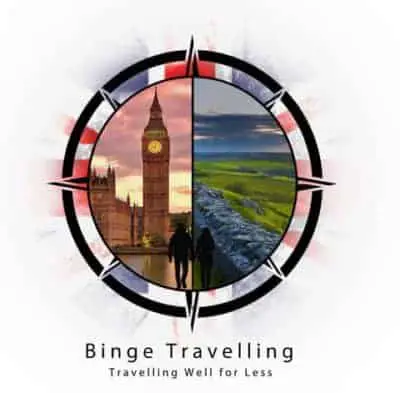
Thank you so much. You really covered all the important things. I actually find this article really useful because I am travelling to UK next month and I will be visting almost all the parts of this beautiful country.
I am also visiting Irleand.
I will bookmark your website for future posts.
Strahinja
Hey! Really Glad this article was useful. Ireland is brilliant, we’re sure you’ll have a wonderful time. If you need any tips, let us know!
Nice post on traveling by air in the UK. The tips you give should be very useful for travelers in the UK and Ireland and you have provided some a lot of very good information that can help make travel smoother and easier for travelers. Thanks for all this great information. -Shirley
Thanks Shirley! Great to know it was useful.